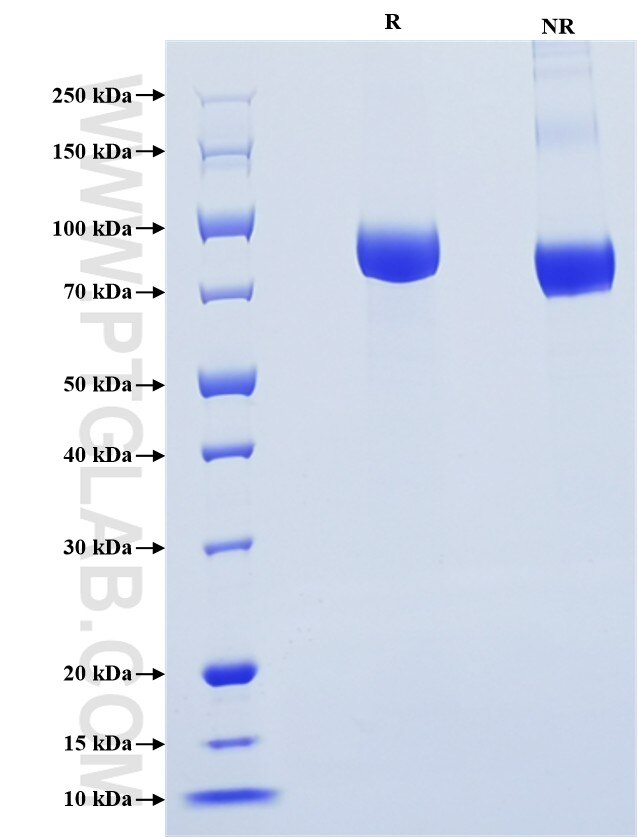Recombinant Human Transferrin/TF protein (Myc Tag, His Tag)
Species
Human
Purity
>90 %, SDS-PAGE
Tag
Myc Tag, His Tag
Activity
not tested
Cat no : Eg0114
Validation Data Gallery
Product Information
| Purity | >90 %, SDS-PAGE |
| Endotoxin | <0.1 EU/μg protein, LAL method |
| Activity |
Not tested |
| Expression | HEK293-derived Human Transferrin protein Val20-Pro698 (Accession# AAH59367) with a Myc tag and a His tag at the C-terminus. |
| GeneID | 7018 |
| Accession | AAH59367 |
| PredictedSize | 80.8 kDa |
| SDS-PAGE | 75-100 kDa, reducing (R) conditions |
| Formulation | Lyophilized from sterile PBS, pH 7.4. Normally 5% trehalose and 5% mannitol are added as protectants before lyophilization. |
| Reconstitution | Briefly centrifuge the tube before opening. Reconstitute at 0.1-0.5 mg/mL in sterile water. |
| Storage Conditions |
It is recommended that the protein be aliquoted for optimal storage. Avoid repeated freeze-thaw cycles.
|
| Shipping | The product is shipped at ambient temperature. Upon receipt, store it immediately at the recommended temperature. |
Background
Serotransferrin(TF) is a 77 kDa secreted protein which is also named as transferrin, siderophilin, beta-1 metal-binding globulin and belongs to a family of homologous iron-binding glycoproteins that encompasses lactoferrin (found both intracellular and in secretions, including milk), melanotrasferrin (present on melanoma cells) and ovotransferrin (present in egg white). TF is a multi-function protein with a primary role in transporting iron in a safe, redox-inactive state from absorption to utilization or storage sites around the body. The association of Tf with the immune system derives from its ability to restrict serum free-iron levels, creating low-iron environments where the infection capacity of pathogenic microorganisms is limited. TF is expressed predominantly in the liver and secreted in plasma, but lower amounts can be synthesized in other tissues such as the brain and the testis.
References:
1. Weaver, Michael, and Douglas W Laske. Journal of neuro-oncology vol. 65,1 (2003): 3-13. 2. Szőke, Dominika, and Mauro Panteghini. Clinica chimica acta; international journal of clinical chemistry vol. 413,15-16 (2012): 1184-9. 3. Irie, S, and M Tavassoli. The American journal of the medical sciences vol. 293,2 (1987): 103-11. 4. Dufès, Christine et al. Therapeutic delivery vol. 4,5 (2013): 629-40.
